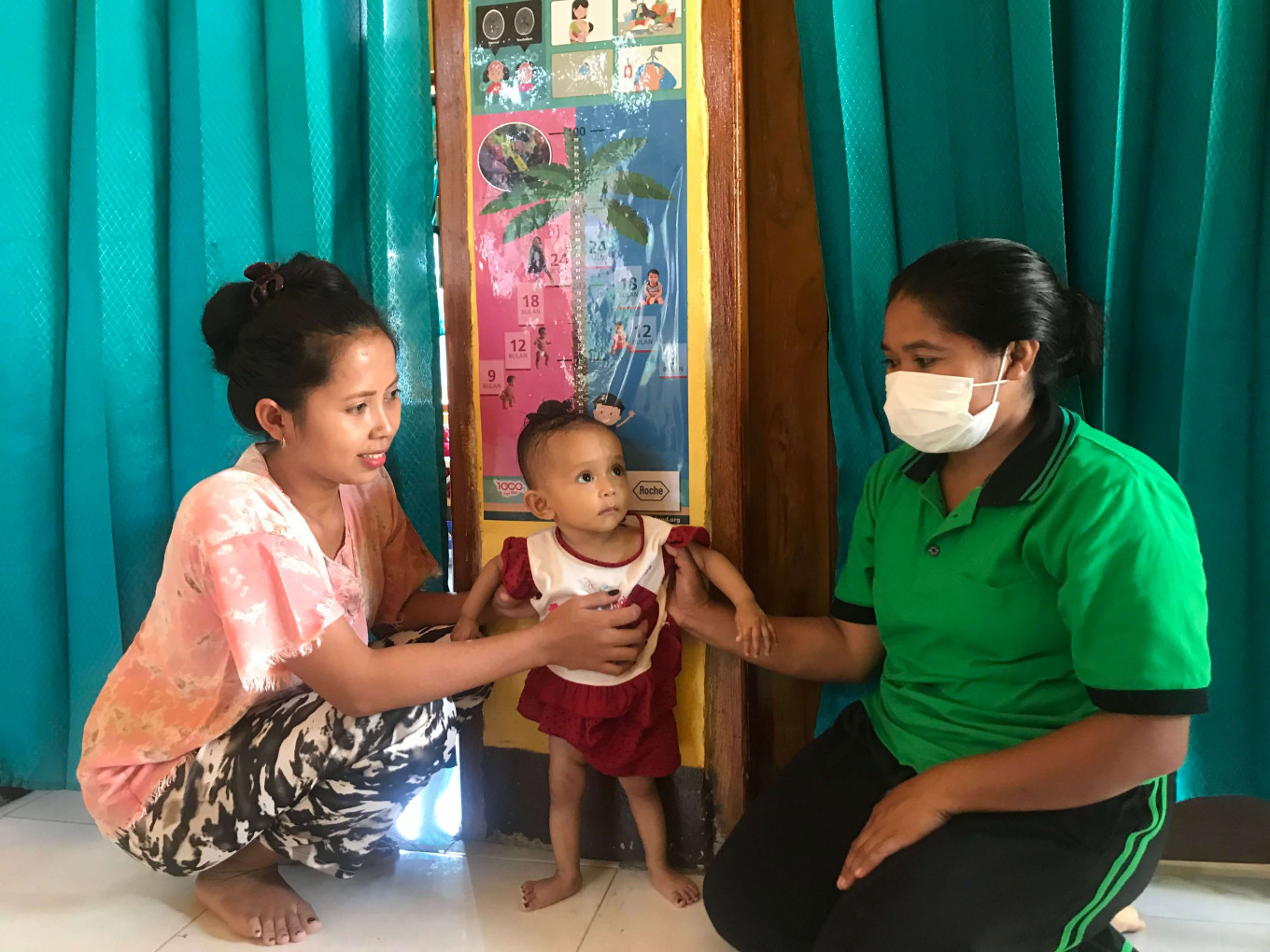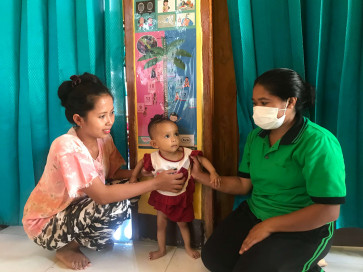Popular Reads
Top Results
Can't find what you're looking for?
View all search resultsPopular Reads
Top Results
Can't find what you're looking for?
View all search resultsBetter days ahead: The campaign to stop stunting in eastern Indonesia
On the other side of East Nusa Tenggara's breathtaking landscape is the far-reaching health condition of stunting, which affects one in three Indonesian children.
Change text size
Gift Premium Articles
to Anyone
S
epti is 8 months old. She has wide-set eyes that beam with curiosity and gaze deep into the eyes of anyone talking in the room. But her legs are conspicuously tiny. When health workers paid a visit to her house in Liang Ndara village, Flores, East Nusa Tenggara (NTT), to measure her height against the pink and blue chart plastered on the wall, the whole house held their breath. The test sought to determine whether Septi would grow, prosper and thrive in the years ahead.
Septi's mother Ana Fitriani, 20, her grandfather Albertus Hadat, 69, and her grandmother Regina Imbong, 59, were alarmed that their first child and grandchild might be malnourished. But a far-reaching, more pressing threat was lurking.
That threat is a difficult-to-assess chronic condition called stunting. What the chart says about Septi's stature carries more weight than just numbers or physical stature. If Septi is more than two standard deviations below the WHO Child Growth Standards median when she reaches her second year, she is considered stunted.
Stunting can limit a child's learning capacity, cognitive skills and immune system and can lead to a higher chance chronic diseases, causing a lasting, sometimes intergenerational impact.
But the word stunting is unfamiliar to locals, let alone its future ramifications. Septi’s grandmother Regina admitted that she had only recently learned the dangers of stunting.
The risk of not knowing
"I'm upset," said Septi’s mother Ana. "I am now aware that my child is not growing as she's supposed to be, and I am very worried.”



















